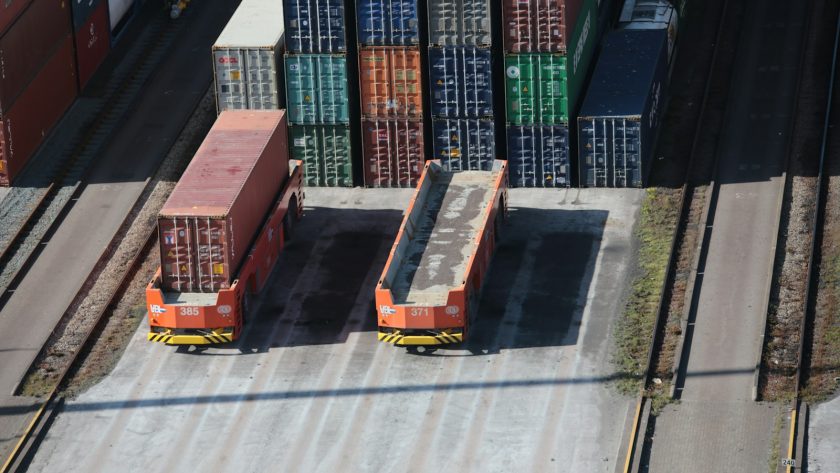Introduction to AGV: Automated Guided Vehicle Systems
Automated Guided Vehicles (AGVs) have become instrumental in modern material handling within various industries. These innovative systems offer a blend of efficiency, precision, and safety, making them invaluable in the logistics and supply chain sectors. As businesses push towards automation to improve productivity, AGVs are increasingly becoming the backbone of warehouse automation. This article delves deep into how AGVs are revolutionizing material handling, their applications, and the benefits they bring to the table.
What Are AGVs?
Automated Guided Vehicles (AGVs) are autonomous robots employed in industrial settings to transport materials across manufacturing facilities or warehouses. These vehicles are equipped with advanced technologies like sensors, cameras, and sophisticated software to navigate complex environments without human intervention.
Key technologies driving AGVs include:
- Laser-based navigation
- Magnetic tape guidance
- Vision-based systems
- GPS and other localization technologies
Applications of AGVs in Material Handling
AGVs are versatile and can be customized suiting specific industry requirements. Their applications in material handling are vast, including:
- Warehouse Automation: AGVs streamline storage and retrieval processes, reducing human error and increasing efficiency.
- Production Line Automation: AGVs transport raw materials and finished goods between different stages of the manufacturing process, ensuring seamless operations.
- Distribution Centers: AGVs assist in sorting, picking, and packing orders, optimizing the supply chain logistics.
- Recycling and Waste Management: Specialized AGVs handle waste collection and transport efficiently, minimizing downtime.
Benefits of Implementing AGVs
Businesses that integrate AGVs into their operations enjoy several benefits, such as:
- Cost Reduction: AGVs lower labor costs and reduce accidents, which translates to cost savings over time.
- Increased Efficiency: These vehicles operate 24/7 without breaks, increasing overall operational efficiency.
- Enhanced Safety: AGVs minimize the risks associated with manual material handling, ensuring a safer work environment.
- Scalability: AGV systems can be scaled up or down depending on the business needs, offering flexible automation solutions.
- Consistency and Precision: AGVs follow predefined paths and protocols, ensuring consistent and precise operations.
Technological Advancements in AGVs
Technological innovations are continually enhancing AGV capabilities. The advent of artificial intelligence (AI) and machine learning (ML) has significantly improved navigation, decision-making, and operational efficiency. Key advancements include:
- AI and ML Integration: AI and ML algorithms enable AGVs to learn and adapt to dynamic environments, improving their functionality.
- IoT Connectivity: Internet of Things (IoT) integration allows AGVs to communicate with other devices and systems, facilitating real-time data exchange and operational synergy.
- Battery Technology: Improved battery life and faster charging technologies ensure AGVs have minimal downtime.
- Advanced Sensors: Modern AGVs are equipped with highly sensitive sensors that enhance obstacle detection and navigation precision.
Case Studies: Successful Implementation of AGVs
Several companies have successfully integrated AGVs into their operations, yielding significant benefits. Notable examples include:
Amazon
Amazon has employed a fleet of AGVs in its fulfillment centers to automate the picking and packing processes. This has significantly reduced order processing times and minimized errors.
BMW
BMW uses AGVs in their production facilities for efficient material transport, enhancing production speed and accuracy. These AGVs handle complex tasks, such as transporting heavy components and synchronizing with robotic arms on the assembly line.
Challenges and Considerations
Despite the advantages, implementing AGVs comes with its own set of challenges:
- Initial Cost: The upfront investment for AGV systems can be substantial, posing a barrier for small to medium-sized enterprises.
- System Integration: Integrating AGVs with existing systems and workflows may require significant time and technical adjustments.
- Maintenance and Upkeep: Regular maintenance and potential technological upgrades can add to the operational costs.
Future Trends in AGV Technology
The future of AGV technology looks promising with several trends on the horizon:
- Autonomous Mobile Robots (AMRs): More advanced than AGVs, AMRs offer enhanced flexibility by navigating environments without needing predetermined paths.
- 5G Integration: The adoption of 5G technology will lead to faster and more reliable communication between AGVs and central control systems, enhancing efficiency.
- Enhanced AI Capabilities: Future AGVs will possess improved AI capabilities, allowing more autonomous decision-making and complex task handling.
- Collaborative Robots: Integration of AGVs with collaborative robots (cobots) will lead to more synchronized and efficient workflows.
Final Thoughts
AGVs are a cornerstone of modern material handling, driving efficiency, safety, and cost savings in logistics and supply chain operations. As technology continues to advance, the capabilities of AGVs will only expand, offering even more robust solutions for businesses looking to optimize their operations. Investing in AGVs represents a strategic move towards future-ready supply chain management, positioning companies at the forefront of industrial innovation.




